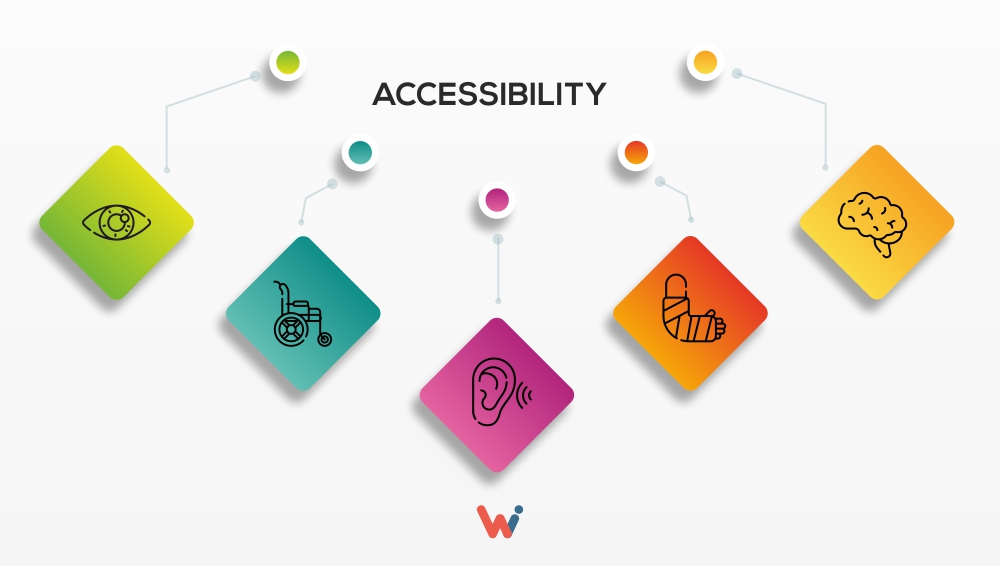The world wide web is a powerful tool for connecting and interacting with people all over the globe. However, it can also be difficult for certain individuals to access certain information due to accessibility issues that prevent them from fully experiencing the web.
This post will explore how different industries are adapting their websites to make them more accessible through several case studies. We’ll also look at the various tools and features they have implemented on their sites to ensure the full inclusion of users with disabilities or situational impairments.
Additionally, we’ll discuss how an increase in accessibility can benefit everyone by breaking down barriers online. So let’s begin.
Building a More Inclusive Web: A Look at Web Accessibility in Key Industries
With the implementation of new accessibility standards, businesses must adjust their websites using services like Accessibility Spark so everyone can use them.
In this section, we’ll look at how companies in key industries adapt their sites to provide an inclusive experience for all users.
Retail Industry: Amazon

Amazon is at the forefront of making online shopping more accessible for all. They are dedicated to ensuring everyone can access the same great Amazon shopping experience, regardless of their disability or device.
To do this, they have developed features such as streamlined navigation, improved readability, and contrast levels. They also offer adjustable font size and text-to-speech for enhanced accessibility for those with visual impairments. Their users can also use voice commands to complete certain tasks.
To make the whole process even easier, Amazon also offers products that feature hardware aids like tactile buttons and switches to interact with their website. They even offer customer support services specifically tailored towards disabled shoppers so they can get help while navigating the site if they need it.
Amazon’s improvements have made it possible for millions of people worldwide to shop online. This shows their dedication to providing accessible shopping experiences for all customers.
Also read: How to Improve Website Accessibility for Users with Low Vision?
Healthcare Industry: Mayo Clinic

Mayo Clinic is a leader in accessibility standards, ensuring its website and services are available to everyone. They have invested in web accessibility tools like automated testing for blind and low-vision users and design guidelines to help create an optimized user experience.
Mayo Clinic also ensures that its websites are AODA compliant with enhanced semantic markup and robust contrast ratio levels to improve readability. Moreover, they offer dedicated search features tailored to disabled users and easily resizable text that can all be adjusted according to personal preference.
Additionally, they have taken the next step by training their staff on web accessibility best practices. This way, they can better understand how disabilities affect an individual’s viewing experience and behavior on the site.
Banking and Finance Industry: Bank of America

Bank of America is at the forefront of providing an accessible online banking experience. They have developed a fully compliant website, ensuring users with disabilities can access their banking services in a comfortable and safe environment.
This includes support for screen readings to allow visually impaired users to navigate the site easily, adjustable text size, and contrast levels. Thus, users can tailor their experience and dedicated alternatives for those who cannot use keyboard or mouse inputs to interact with the webpage.
Beyond that, Bank of America provides access to resources and support and has tools specifically designed to help disabled customers manage their finances more efficiently. For example, they offer voice-activated customer service via Alexa and Braille ATM locating capabilities.
They also offer remote sign language interpreters that customers can connect with virtually anywhere on demand. These solutions are helping to provide equality in banking services for all making Bank of America one of the top proponents for financial accessibility.
Travel and Hospitality Industry: Airbnb

Airbnb is a hotbed of innovation in accessibility standards, working hard to make its platform open to everyone. They have created features such as a detailed accessibility filter for booking accommodations.
This way, users can easily identify properties with specific accessible amenities such as wheelchair ramps or stair lifts. This filters out properties that don’t match their requirements, making it easier to select the right place for their needs.
Airbnb also has an enhanced search feature that allows users to check additional details about the property from visual cues. These cues include images and detailed descriptions tailored to those with disabilities.
Additionally, they have created a dedicated system for rating property accessibility. Thus, users can see how suitable each accommodation may be based on other guests’ experiences and ratings.
Media and Entertainment: Netflix

Netflix is a leader in accessibility standards and has developed an impressive range of tools to make its content more accessible for everyone. They offered support for audio descriptions of scenes and actions and closed captioning for the deaf and hard-of-hearing community. They also provide multiple profile customizations tailored to individual needs.
Additionally, they provide transcripts that allow users to toggle through a show or movie and be quickly up-to-speed without having missed any important moments.
To make the experience even easier, they have also implemented auto-play options with various speed settings. This way, users can customize playback speed according to preference and audiovisual translations that enable dialogue options to be selected in a preferred language.
This customization level means that Netflix gives customers complete control over how they view their favorite shows and movies. As a result, the streaming platform is opening up entertainment possibilities in unparalleled ways.
Nonprofit Organizations: The American Red Cross

The American Red Cross is committed to making its online presence and services as accessible as possible. They employ various tools to assist those with disabilities in navigating the website. These include adjustable font sizes, video transcripts for streamed and on-demand courses, visually enhanced search results, and data organization on pages.
They also have dedicated programs focusing solely on disability-related topics, such as integrated self-management training for caregivers or disabled individuals who need support.
Final Thoughts
The above case studies showcase how companies across different industries have been adapting to accessibility standards to make the web an equal and safe space for everyone.
Utilizing tools like improved readability and contrast levels ensure that users with disabilities or situational impairments can access the same services as those without them.
Additionally, this post highlights how an increase in accessibility benefits everyone by providing a level playing field online, no matter their impairments.
You may also like: How Many Types of Accessibility Solutions are There?

